Exotic fruits and their health benefits
Exotic fruits: Lychee, Pitaya, Rambutan, Yaka or Jackfruit, The fruit of the bread tree, Noni, Kiwano, Sugar apple, Durian, Duku (Langsat), Camu Camu (Myrciaria dubia), Salak, Mangostan (Garcinia mangostana), The miracle fruit, Star fruit (Carambola), Cocona, Mamey, Cherymoia, Jabuticaba, Bael.
According to some theories, our diet should be based on fruit, because the teeth we are endowed with are not the most suitable for eating foods such as meat and our digestive system is not able to process heavy foods...
In addition to being healthy, fruits are a rich source of water, fiber, vitamins, minerals and antioxidants for the body that help prevent premature aging. And when maybe we are no longer attracted to the fruits around us, we can try with confidence, but also with a lot of curiosity, the exotic fruits, which are more and more attractive and with a unique taste.
The richness of tropical fruits
A wide variety of rare and exotic tropical fruits captivate us at first sight with their striking colors and unfamiliar appearance. These are fruits that have become known due to the traditional benefits that fruits in general offer to the body, being foods with a high content of nutrients, but also due to other less known health benefits.
In Europe and, more specifically, in Romania, not all exotic fruits can be found on the market, but if we ever have the opportunity in other places to eat one of the eye-catching tropical fruits, it is useful to know what it is and why it is good to enjoy it with confidence.
Lychee
Originally from China and very common in Southeast Asia, lychee is noted for its many health benefits because it contains iron, vitamin C, folic acid, potassium and magnesium. It has a sweet aroma, is juicy and has become known for its healing properties:
- Fights his blood pressure, hypercholesterolemia, hyperuricemia, weakened immune system, anemia and stress ;
- Represents a rich source of water;
- It is low in fat, being recommended in diets;
- Reduces abdominal fat, being at the same time beneficial in combating obesity, due to its polyphenol content;
- Contributes to the improvement of lipid metabolism, due to its fiber and polyphenol content;
- Prevents the oxidation of cholesterol with low-density lipoproteins, i.e. "bad cholesterol”.
Pitaya
Also known as pitahaya or dragon fruit, it is native to Central America, but is now easy to find in many other parts of the world, including Romania. Its appearance is truly exotic, as it resembles the skin of a dragon, due to the green scales.
In terms of nutritional value, this fruit stands out because:- It has a high percentage of water, which makes it a strong moisturizing food;
- It is rich in antioxidants, mainly vitamin C and flavonoids;
- Has the ability to inhibit free radicals on certain lipids;
- It is a rich source of fiber (3 grams), so it is recommended for good digestion;
- Represents a source of minerals: contains magnesium, iron and calcium;
- It is recommended in diets because it is low in fat, carbohydrates and protein, but also because it is low in calories, namely, 60 calories per fruit.
Rambutan
It is another tropical fruit typical of Southeast Asia, with a sweet aroma, although sometimes with some acidity. The appearance is similar to lychee, but it has thorns that look like long hairs (a really exotic look). What are its health benefits?
- Rich content of antioxidants, especially flavonoids and polyphenols;
- Rich source of potassium and to a less extent iron and magnesium;
- It favors the intestinal transit, being rich in water, and the fiber it offers is insoluble.
Yaka or Jackfruit
It is considered the largest fruit in the world, with a weight of up to 30 kilograms. It is called the fruit of the seven flavors, because its aroma combines mango, kiwi, banana, peach, orange, melon and pineapple. What do we need to know about Jackfruit?
- It is recommended in vegan diets, being rich in iron, calcium and vegetable proteins;
- Prevents DNA damage due to factors that cause oxidative stress in the body (from ultraviolet radiation, for example), due to its bioactive compounds;
- Reduces cardiovascular risk factors, such as high cholesterol or high blood triglycerides, insulin resistance, hyperglycemia or obesity;
- It is useful for fighting diabetes and its symptoms, due to the fact that it can lower glycosylated hemoglobin, which is a future indicator of possible complications of the disease.
The fruit of the bread tree
Also known as Yaca, this fruit is native to Southeast Asia, especially Polynesia. It is a food rich in carbohydrates, proteins, fiber and gluten free. According to experts, bread fruits contain more amino acids than soy and can accompany both sweet and salty foods, because its aroma is quite neutral. What are its benefits?
- Contains almost half of the recommended daily value of fiber;
- It is rich in vitamin C, essential for iron absorption;
- It is a rich source of vitamins A and B, which strengthen bones, teeth, skin and hair, improve muscle tone, as well as minerals (potassium, calcium, magnesium, phosphorus or iron).
- It is a powerful antioxidant;
- Helps prevent cardiovascular disease because it contains phytochemicals that protect the heart from atherosclerosis (creating plaques that, over the years, can eventually clog blood vessels);
- Contains 25% carbohydrates and 70% water, thus being a strong moisturizing food.
Noni
Noni is another fruit with an exotic look, native to Southeast Asia, that has become largely known due to one of its components, proxeronine. In fact, indigenous cultures, such as those in Polynesia, have used it for millennia to improve their health.
Why is it recommended to eat this fruit? Because:- Adjusts metabolism and biological functions due to the content of proxeronine, which is converted to xeronine in the body;
- Relieves the symptoms of arthritis, because it has anti-inflammatory and histamine inhibiting effects;
- Stabilizes blood sugar;
- Reduces menstrual cramps and the need for men to urinate at night;
- Fights various bacteria, including Pseudomonas aeruginosa, Escherichia coli and the tubercle bacillus;
- Improves the body's defense system, being able to stimulate "T" lymphocytes, responsible for the body's defenses;
- It lowers blood pressure, having a vasodilating effect.
Kiwano
Although its name may remind us of kiwi, kiwano has nothing to do with the previous one. Known as wild cucumber, spiked or African cucumber, kiwano is a fruit with a tropical acid, quite acidic. It is usually eaten in combination in juices, sweet dishes and a fresh salad.
Here are some of the benefits they offer:- It has a high content of vitamin A, being effective for the health of the eyes, hair, skin, bones and for the proper functioning of the immune system;
- It is recommended for a healthy and balanced diet, as it provides a very low amount of calories and fats;
- Ally for the health of nerves and blood vessels, due to the high level of alpha-tocopherol, a powerful antioxidant form of vitamin E;
- A cure for staying young, because kiwano contains vitamin A, vitamin C, natural antioxidants and many organic compounds;
- Contributes to bone strength and helps prevent osteoporosis due to its high mineral content.
Sugar apple
Its name comes from the characteristic shape, being the size of an apple and covered with scales called carpels. It is known almost all over the world and especially after the English name, sugar-apple. Sugar apple provides the body with significant amounts of vitamins, minerals and antioxidants and helps to:
- Eliminate the signs of aging and increase of skin elasticity, due to the high content of polyphenolic antioxidants;
- Stop hair loss and remove dandruff, the content of vitamin C in the fruit being essential among other things for the production of collagen;
- Protects against cancer, due to antioxidants present in the fruit, which prevent the spread of cancer cells to other parts of the body;
- Improves view, beta-carotene and other nutrients and antioxidants present in this fruit reduce the risk of macular degeneration and prevent cataract;
- Facilitates urinary secretion and relieves urethritis due to its antiseptic properties.
Durian
Known as the worst smelling fruit in the world, durian is a large tropical fruit (similar to watermelon) and covered with thorns. However, those who dare to try it, despite the bad smell it emits, will discover a spectacular aroma and its consumption has many health benefits:
- Rich source of nutrients, which have the role of strengthening the immune system, inhibiting the activity of free radicals and improving digestion;
- Maintains the health of the skin, eyes, bones and hair, due to the content of vitamin B6 and vitamin A;
- Supports bone strengthening, is beneficial for people with anemia and protects against cardiovascular disease;
- High content of vitamin C, essential for absorbing iron, folic acid, very important for pregnant women, thiamine, which supports the transformation of carbohydrates into energy;
- Lowers cholesterol due to its niacin content.
Duku (Langsat)
Originally from the Malaysian Peninsula, it is cultivated in Southeast Asia, South India and the Philippines, due to the benefits of its fruits. With a sweet and sour aroma, duku is appreciated for its many healing properties.
- Suitable for digestion, as it can be used to treat diarrhea and intestinal parasites. It can be mixed with water to make a deworming solution;
- Remedy for ulcers and stomach pain, its resin is useful in treating inflammation and acute stomach pain;
- Rich source of vitamin C, essential for repairing tissues and producing collagen, helps protect the body from free radical damage, stimulates immunity;
- Vitamin A content, which plays an important role in maintaining healthy teeth, skin, mucous membranes, as well as soft and skeletal tissues;
- Supports the production of red blood cells and the development of the body, due to the content of riboflavin. It also helps the body release more energy from carbohydrates;
- Effective against cancer because it contains limonoids;
- Rich source of fiber, which reduces the risk of heart disease and stimulates digestion;
- Cure against fever, having the power to lower body temperature.
Camu Camu (Myrciaria dubia)
It is a shrub native to the Amazon, which grows in flooded soils during the rainy season, but is also grown as a fruit tree. Slightly sour, this fruit is more common in Romania in the form of capsules or powder preparations, ideal to add to smoothies, juices or yogurts.
Considered a superaliment, it stands out especially because:- Provides an enormous amount of vitamin C, namely 2,145 milligrams per 100 grams (lemon, considered a rich source of ascorbic acid, has only about 50 milligrams per 100 grams);
- It has strong antioxidant and anti-inflammatory properties, able to combat oxidative stress;
- It is a rich source of antioxidants (in addition to vitamin C), especially flavonoids, such as anthocyanins and ellagic acid;
- Helps to lose weight by reducing the layer of fat and metabolic inflammation;
- It is rich in minerals such as calcium, potassium, sodium or magnesium.
Salak
Derived from the Salacca zalacca plant, a species of palm belonging to the genus Salacca and cultivated in Thailand, Nanegalito, Malaysia and Indonesia, this fruit is also known as the fruit of the snake, as it has a brown shell covered with scales. Inside, its flesh is yellow and has a sweet aroma.
In terms o dits health benefits, it is useful to know that:- It contributes to the health of the brain, the potassium content helps to transport oxygen to the brain and the pectin content protects the brain from excess bad cholesterol. This makes the salak the fruit of memory;
- It is considered a food with remarkable antioxidant properties, due to its important content in beta-carotene and in ascorbic acid;
- Natural remedy for skin health, as it contains vitamin C and antioxidants;
- Reduces heartburns, due to its content of saponins, tannins, flavonoids and calcium, being a cure for indigestion and diarrhea;
- Helps control diabetes and regenerate pancreatic cells, because it contains Pterostilbene, which helps lower blood sugar;
- Effective in diets, due to the high content of fiber and antioxidants;
- Keeps your eyes healthy, being an excellent source of beta-carotene.
Mangosteen (Garcinia mangostana)
Known as the Indian jobo, the mangosteen is a tropical tree native to Indonesia, but can now be found in Southeast Asia. Its fruit is characterized by a citrus-like aroma, between sweet and sour.
As for the nutrients provided by mangosteen, this exotic fruit stands out through:- Its content of folate, thiamine, riboflavin and to a lesser extent Vitamin C;
- Contributes to the prevention of cancer, due to its rich content of xanthones, which are able to control cell division and growth, apoptosis, inflammation and metastasis;
- It is rich in manganese, an essential mineral for the synthesis of sex hormones and fatty acids, as well as for the production of cartilage;
- Contributes to the adjustment of muscle function, nervous system, as well as blood sugar and blood pressure levels, due to the magnesium content.
The miracle fruit
Originally from West Africa, the miracle fruit is known for its miraculous power to change the flavors of certain foods. For example, it makes the lemon taste sweeter and less sour. What’s the explication? Miraculin, a protein that can change the flavor of acidic or bitter foods, creates a sweet sensation.
But it also deserves its name because of the many health benefits, namely:- It is beneficial in the treatment of diabetes, as the miracle fruit seems to help protect against insulin resistance, a health problem closely linked to the development of diabetes;
- It is an ally for weight loss, because the miracle fruit can improve the sweetness of low-sugar desserts and thus limit caloric intake;
- May be beneficial for patients undergoing chemotherapy. As a side effect of chemotherapy, negative taste changes can lead to poor nutrition and reduced quality of life. But the miracle fruit seems to change that, giving patients a chance to enjoy the taste of food again.
Star fruit (Carambola)
The star fruit is native to Indonesia and is notable for its juicy, crunchy, light yellow content and an acidic aroma.
It is recognized for its health benefits, namely because it is:- Food recommended in diets, because it contains a lot of water, very little fat and is low in calories;
- Natural laxative, as its pulp contains soluble fiber, being thus recommended for people suffering from constipation;
- Recommended for diabetes, high blood pressure and diseases of the heart and blood vessels, as it is low in carbohydrates and also rich in potassium;
- Contains a lot of vitamin A, recommended for eyesight, health of hair, skin, bones and for the proper functioning of the immune system;
- Rich source of vitamin C, essential in the formation of collagen, for bones and teeth, red blood cells, resistance to infections and iron absorption;
- Rich in potassium, which is necessary for both transmission and nerve impulse generation, for normal muscle activity.
Cocona
Cocona is the tropical citrus fruit considered to bethe tomato of the Amazon. Its color and shape vary, some are larger and reddish, while others are small and yellow.
It is a real source of health, since:- Helps fight anemia, vitamin C in the cocona absorbs iron more easily, which is important for maintaining adequate levels of this component in the blood;
- Adjusts blood sugar levels, as it has a low sugar content, a property that helps also control cholesterol;
- Controls constipation, due to the fiber content that retains fat and helps to expel it easily from our body;
- Protects the kidneys and liver, cocona can control excess uric acid and ensure the proper functioning of the kidneys and liver;
- Controls eating disorders, due to the content of vitamin B5, which helps anemic people better absorb iron from food;
- Effective hair treatment, as the nutrients in this fruit help maintain a natural hair shine;
Mamey
Mamey is an evergreen tree native to South America, which is now found in other parts of the world, including West Africa and Southeast Asia, Florida and Hawaii. Its fruit is characterized by a juicy pulp and a sweet aroma.
Why is it good to consume mamey when we have the opportunity? Because:- It is a powerful antioxidant, it contains a large amount of vitamin C, necessary for the production of collagen, which helps prevent aging;
- Natural treatment for stomach problems, due to its astringent properties, which will help reduce the symptoms of diarrhea or gastritis;
- Contributes to the health of the eyes and skin, because it has a high content of beta-carotene, lutein and tannin;
- It is a natural antibiotic, vitamins A and C help fight various diseases.
Cherymoia
Cherymoia is a heart-shaped fruit native to the Peruvian Andes. Its pulp is sweet, contains seeds and is grown in the autumn and winter seasons, such as oranges and grapefruit. And most importantly, its consumption is very healthy.
- Improves cardiovascular health due to the high amount of potassium; Its low sodium and fat content makes it a food suitable for people suffering from high blood pressure and other heart diseases;
- Rich source of antioxidants that control cholesterol levels;
- It is a great ally for losing weight;
- Ally in diets, as cherymoia provides a feeling of satiety;
- It is a regulator of the nervous system, being an excellent remedy for people suffering from anxiety;
- Ally against anemia, due to its iron content;
- Improves memory, being rich in phosphorus;
- It is a food recommended for patients with osteoporosis or decalcification disorders, being rich in calcium;
- Helps to absorb bile acids;
- It is an excellent natural laxative, as the fiber also regulates intestinal transit and bacterial flora.
Jabuticaba
It is a fruit that can be eaten in Brazil, Paraguay, Bolivia and Argentina and has the particularity that it sprouts on the stem of the plant and not on its flowers. We can find it only in its production regions, because it quickly loses its quality when it is harvested. Jabuticaba is rich in antioxidants and bioactive compounds that could provide various health benefits:
- Prevents premature aging, cancer and heart disease, because it is rich in anthocyanins, which reduce cell damage caused by free radicals;
- Strengthens the immune system, because it is rich in zinc and vitamin C;
- Helps weight loss because it is low in calories and high in fiber that increase the feeling of satiety;
- Fights constipation, due to the fiber content;
- Helps control diabetes, because it is low in carbohydrates, prevents high blood sugar;
- Improves skin health, being rich in vitamin C;
- Helps prevent anemia because it contains iron and B vitamins.
Bael
It is a sweet and fragrant fruit, native to India and Southeast Asia. The fruit is usually eaten fresh, dried or in juice form. Consumption of bael fruit is said to help treat certain health conditions. However, the following uses are based on tradition, scientific theories or limited research. They have often not been fully tested in humans and their safety and efficacy have not always been proven:
- Treatment of digestive disorders (including diarrhea and dysentery) by eating raw fruits;
- Natural laxative generated by the consumption of ripe fruits;
- Pectin, another important component of the fruit, is used in the food industry;
- Bael seed oil has generated beneficial effects in the regeneration of tumor cells.
Now that we have made a small journey through the paradise of tropical fruits, we can only test the ones that are around us, but also the ones that we will have the opportunity to meet when we travel on their territory. But be careful, before consuming them, it is recommended to turn to specialists who know them and not to consume them in large quantities. But a simple tasting experience will be unforgettable.
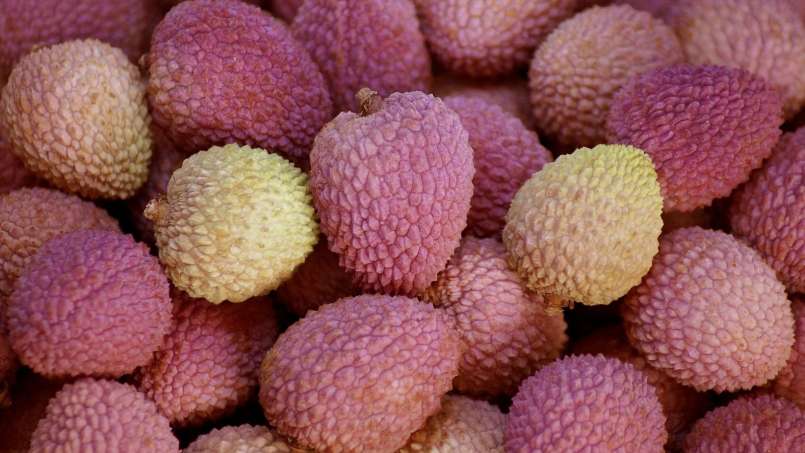
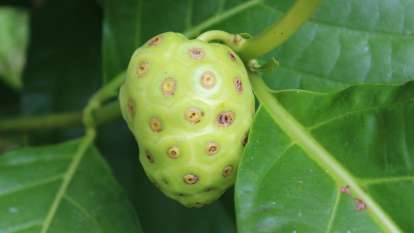

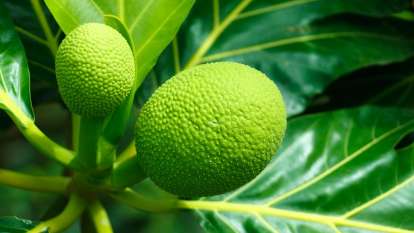
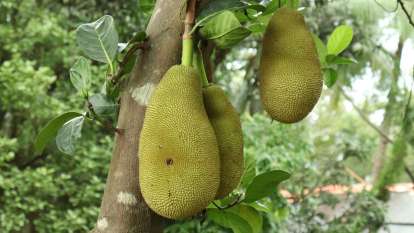
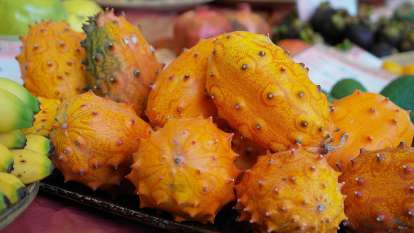

Comments
alex
All interesting about exotic fruits